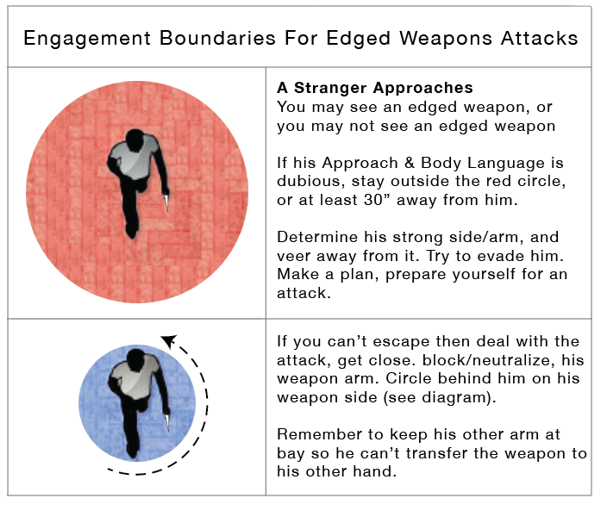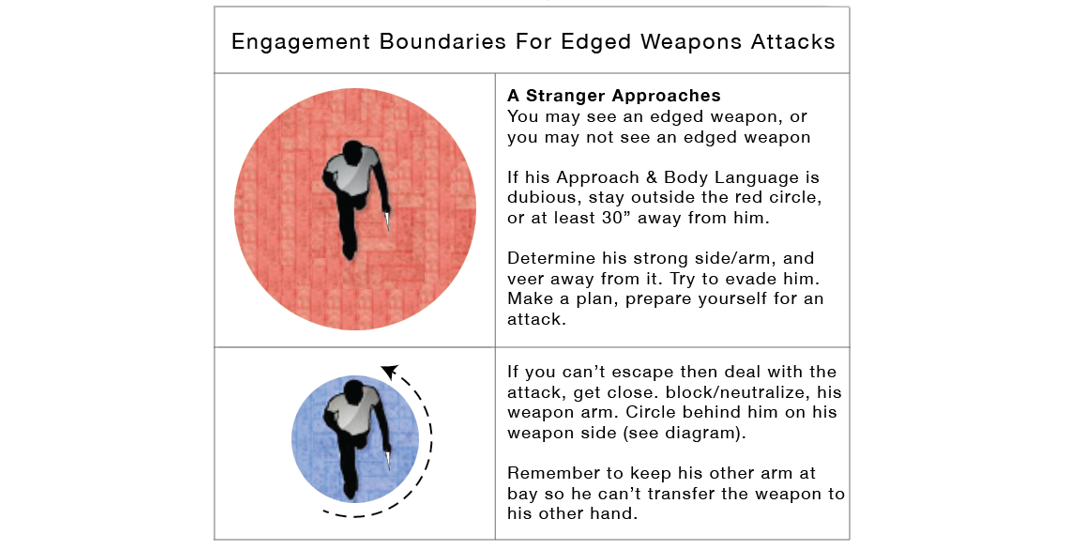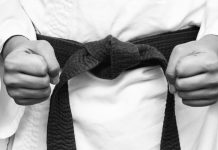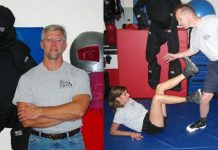QUICK TIPS CHART
I notice that most students do not clearly understand distance when they practice defense against simulated knife attacks and many practitioners of knife styles (including South East Asian styles) may not understand distance either. They often rush at one other and assume they will survive the knife attack because their technique is better, but this is not necessarily the case. I want to illustrate this topic since it’s difficult to discuss with only words. It is important that these concepts be implemented in practice sessions.

GENERAL CONCEPTS
1. When a stranger approaches you in an erratic or dubious manner, quickly scan his arms/hands to see if he is hiding one hand. The hidden hand will be his attack hand. Step off to the side immediately if he comes too close. Always assume it’s a weapon.
2. If he comes too close, make a plan and veer away from the hand you cannot clearly see. Criminals in cities will not approach too closely since they want to put you at ease before the assault.
3. Always carry something with you that can be used in defense. It can be a soft bag, a stick, a flexible weapon, a knife etc. To block a sudden attack, you will need to be aware, you will need to profile. I prefer a soft attache bag as my primary blocking weapon, then an additional weapon you feel comfortable with.
4. At the first sign of an attack, keep your distance, hollow out and utilize the neutralizing methods hopefully you have learned in your training. The most difficult attacks to defend from are the prison style attacks, which feature quick in and out stabs. Work on this style of attack when you train. On the other hand, dedicated attacks are easier to recognize – the attacker takes a few steps forward in a dedicated rampage.
5. Once you can grab his weapon arm, you can neutralize it by collapsing it against his body, positioning it on his body side, pulling his arm to the ground or bringing it behind him administering one of the various armlocks you should be learning in your training.
6. Many students make the mistake of moving out and away from the attacker once they have their arm, however he can easily pull it back — stay close to control the arm. Remember, if he moves, move with him. Learn to step forward and rearward using fencing style, this can instantly save your life. You only need to practice it a few minutes a day.
7. Save and print the Boundary Diagram PDF using the link below and keep the diagram with you to review the importance of distance. Note the RED circle illustrates the distance you need to be at from an initial attack. Once you are able to neutralize the attack and control the weapon arm close in to the BLUE circle distance. Hopefully your instructor will emphasize these principles in class.
Boundary Diagram for Knife Attacks PDF

To contact WR Mann and Defense Science visit his listing on the Martial Arts Schools and Businesses Directory by clicking on the image on the left.






